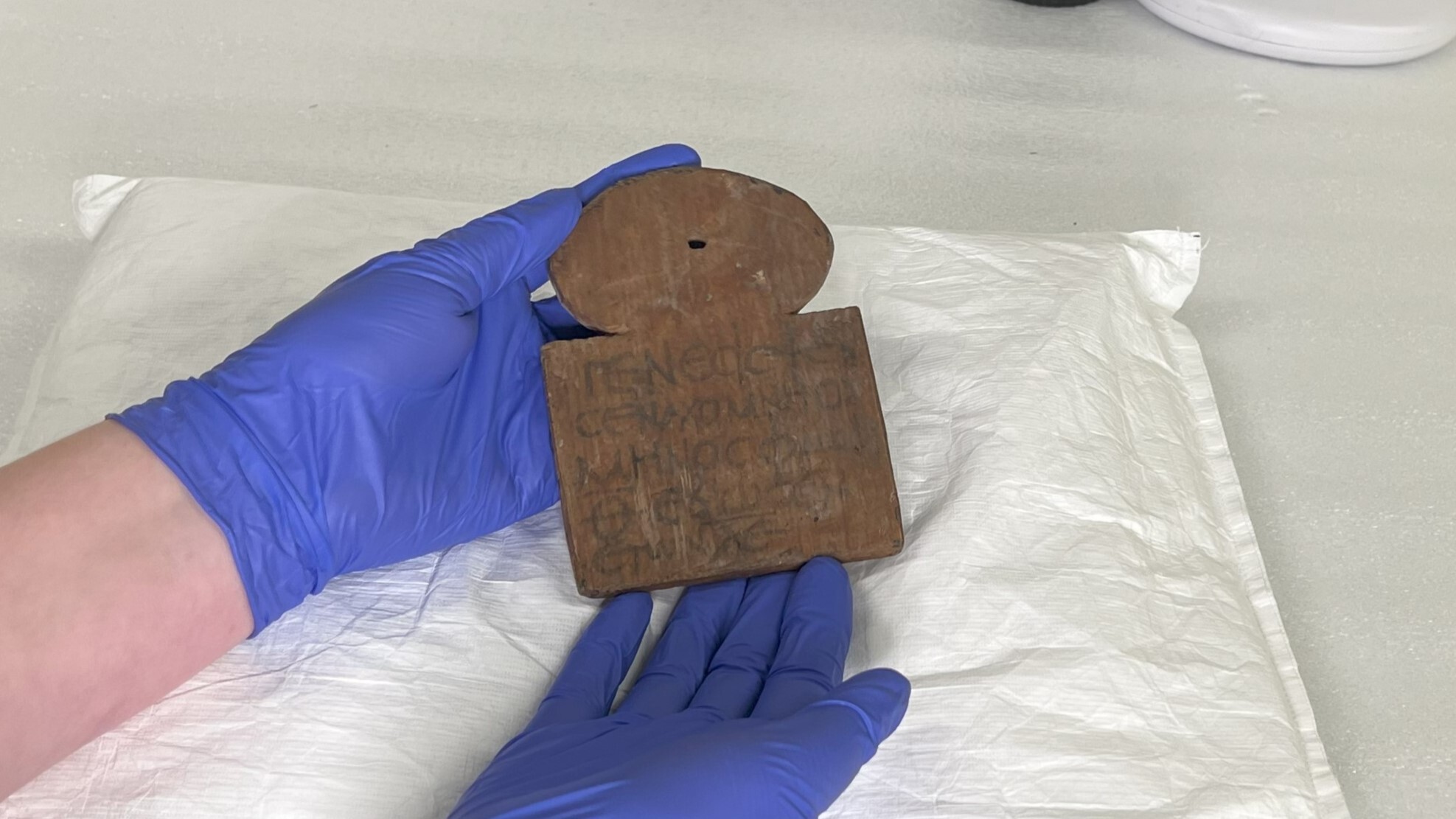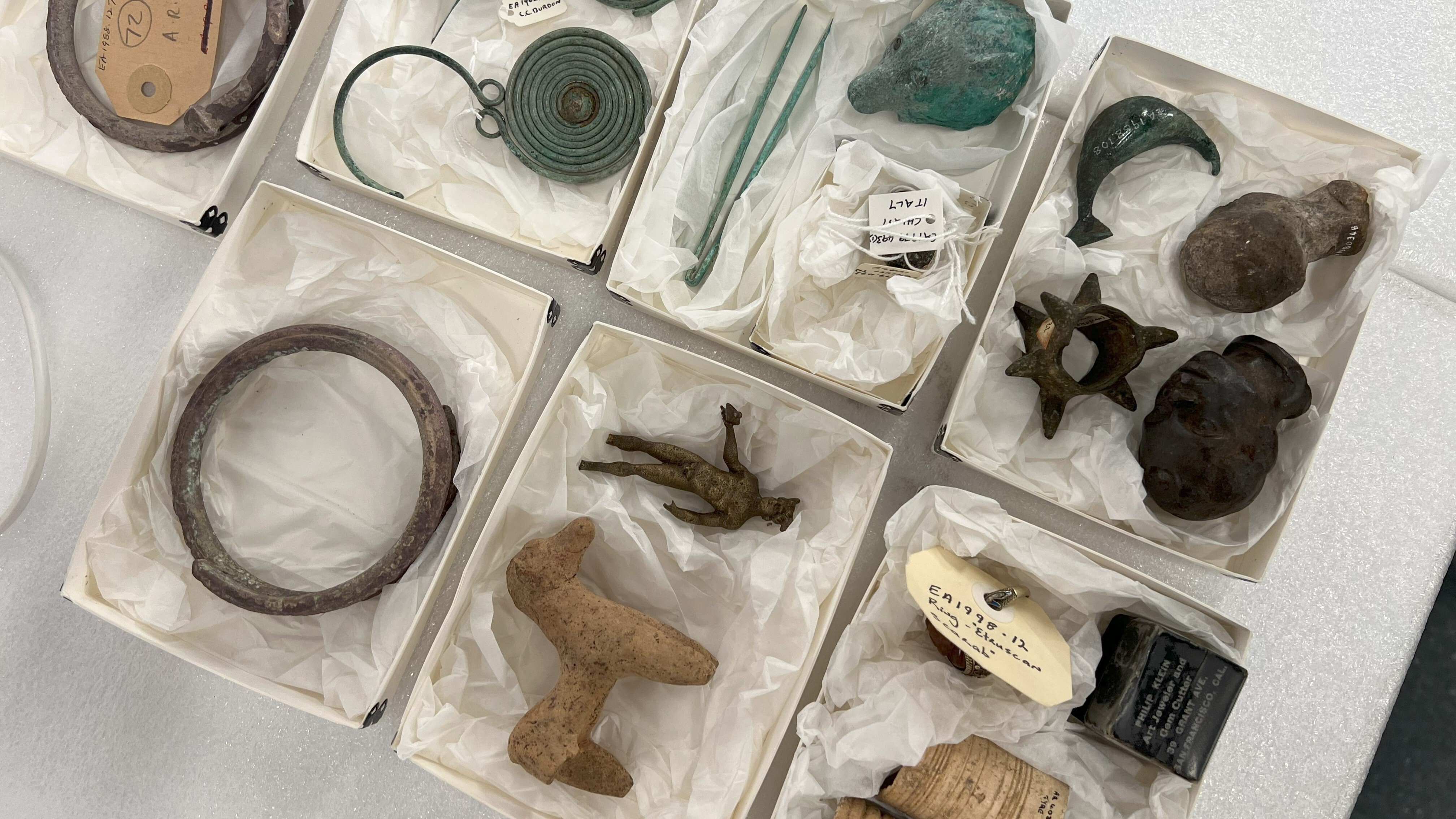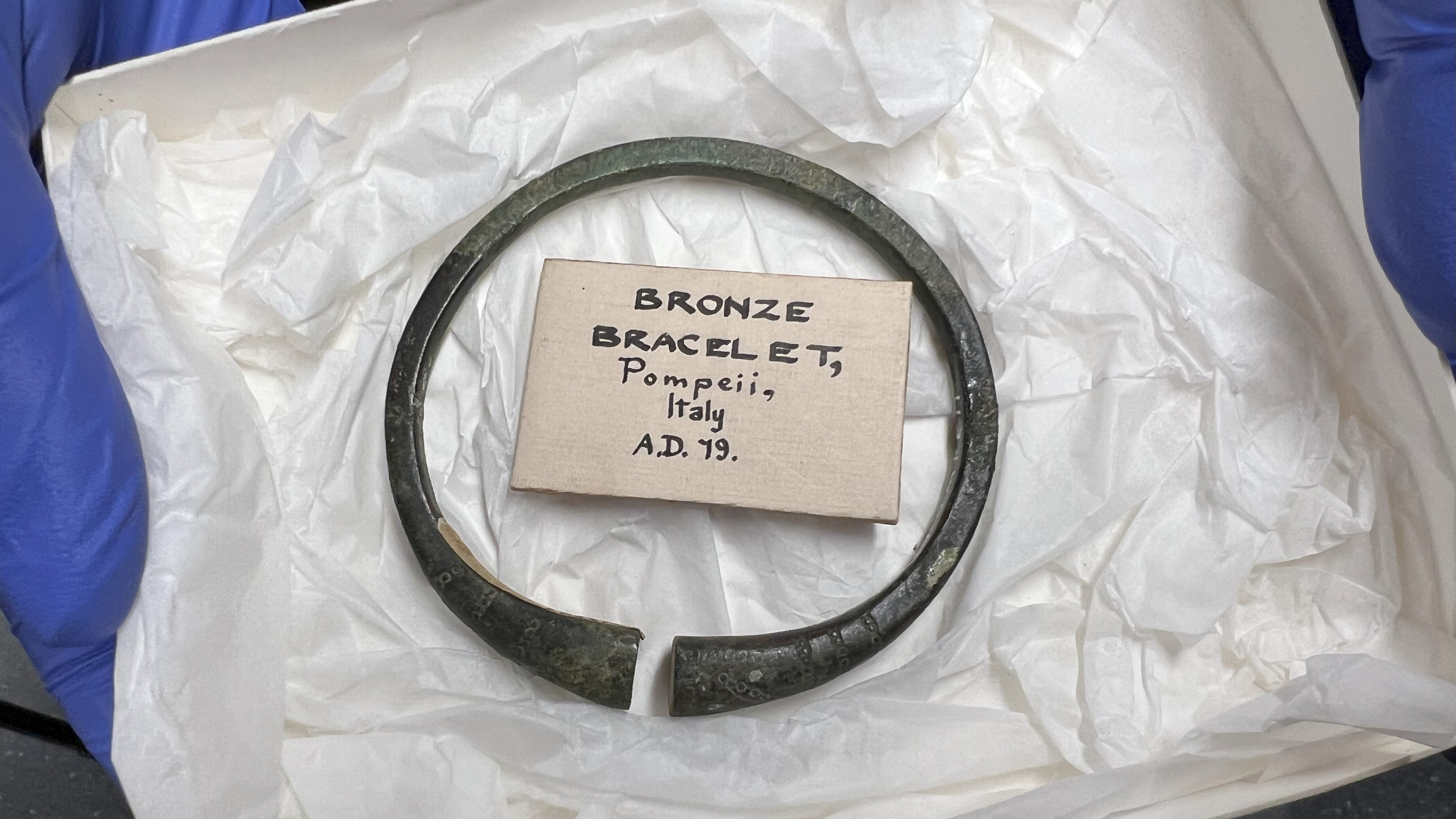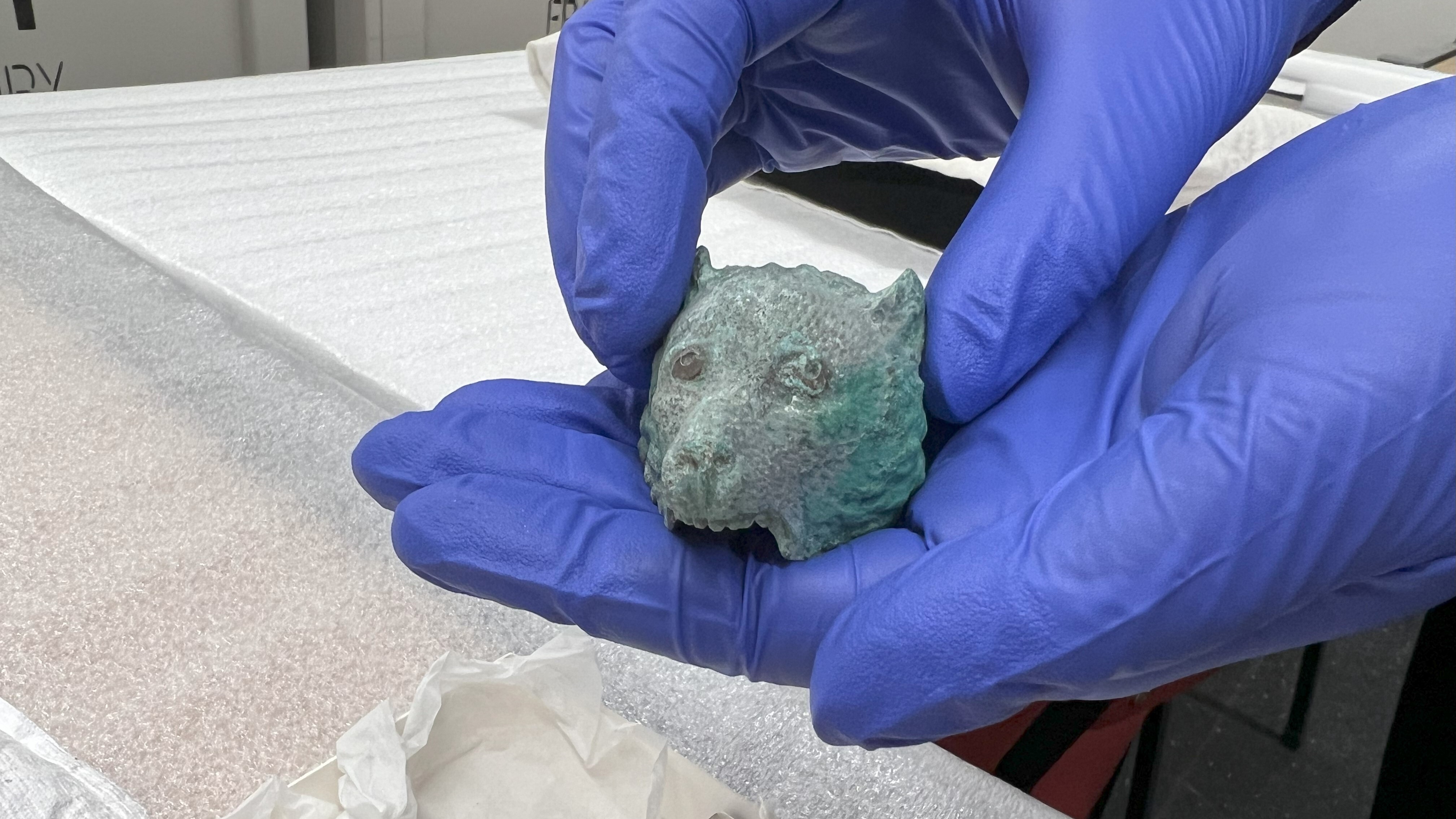The mysterious text was written over 2,000 years ago. But it had not been deciphered until now.

This unassuming wooden tag bearing an inscription in Ancient Greek was unearthed in Pompeii. It is part of Canterbury Museum’s collection of over 3,000 classical objects from Egyptian, Roman and Greek culture. These range from ancient vases, coins, masks and jewellery, to spearheads, lamps and statuettes.
The secrets of this collection are being unlocked thanks to a partnership between the Museum and the University of Canterbury Teece Museum of Classical Antiquities.
With the Museum’s exciting redevelopment well underway, an opportunity arose to loan the Museum’s classics collection to the Teece for the duration of the project. This means the collection continues to be available to classics students at the University of Canterbury during internships at the Teece. The students can delve into the collection, find out more about the objects and sometimes even unlock secrets held for thousands of years.
The loan also means the collection is accessible and safely stored during the redevelopment. The Teece – a museum based in the old Chemistry building of Te Matatiki Toi Ora The Arts Centre – looks after several important collections, including some of the finest classical antiquities in the country.
Teece Museum Curator Terri Elder says the project helps both museums.
“Our students get the chance to have hands-on experience with this material that they might not otherwise easily get to see and apply their learnings to real-life situations in a museum.
“It’s also a chance for us to add a huge amount of information to the records about these items and that’s great for Canterbury Museum. It means that when comes to reopen and put this material back on display … they'll be able to use that information and enrich the exhibitions.”
University of Canterbury classics student Jackson Head was working on artefacts from archaeological excavations at Pompeii and Herculaneum, when he came across the wooden tag with a mysterious ancient Greek inscription. Jackson was able to decipher the inscription and discover the tag was actually a label for a mummified person. These small wooden tags were attached to mummified remains to make sure they were correctly identified and buried in the right place.
A string would be passed through the hole and the label would be tied to the deceased’s feet or around their neck. The inscription on this tag tells us that this mummified person was most likely a woman who died at the age of 35 during the Egyptian month of Phaophi (October/November), probably during Roman Egypt just over 2,000 years ago.
Jackson was one of three interns who worked on objects from Canterbury Museum’s collection at the Teece last year.

Classics student Eleanor O’Neill examined a collection of seven small animal figurines to better understand where they came from and how they were used. She researched their symbolism and the materials used to make them. It’s believed some of the animal figurines might have been votive offerings, objects given as gifts to gods to gain favour or fulfil a wish. Roosters were symbols of courage in the ancient world and offering a figurine of one in a temple to the gods would have been a wish for courage in upcoming battles.
Other animal figurines in the collection include a hollow bear’s head made of bronze, which was probably used as a lid for a Roman ampullae (flask). A terracotta ram, which looks like a child’s toy as it rocks from side to side, may have actually been part of the decorative handle of a pot. Using this research, Ellie created a teaching resource including a series of lesson plans focusing on animals in the ancient world.

Student Aidan Kays researched items from the Museum’s jewellery collection, working alongside Teece Assistant Curator Emily Rosevear. Jewellery is often seen as a symbol of power and status, displaying wealth and taste. But jewellery in the ancient Roman world could also have a practical function. Intaglios, for example, were carved gems which were decorative and could also be used as a signature seal.
Fibulae are ancient pins for holding garments in place (much like a modern safety pin), and often depicted animals. Aidan researched three ancient Roman bracelets. Little was known about the decorative Bronze bracelets. Aidan discovered that one of these was likely an armilla, which rewarded soldiers for valour and gallantry.
These discoveries, and many more to come over the next few years, will help reveal secrets from the Canterbury Museum collection, grow our knowledge about classical objects and enrich the new Museum when it opens in 2029.






